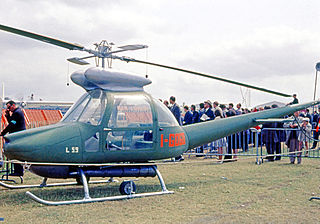
The Aer Lualdi L.59 was an Italian helicopter that failed to reach quantity production.

The Agusta A.104 Helicar was an Italian prototype light commercial helicopter first flown in December 1960.
The Pitcairn PA-19 was a four-seat autogyro developed in the United States in the early 1930s. While most of Pitcairn's autogyro designs featured open cockpits in tandem, the PA-19 had a fully enclosed cabin. It also had wings that carried control surfaces. The rotor provided lift only, but could be tilted in flight to trim the aircraft. Four examples were built before the effects of the Great Depression forced Pitcairn to abandon autogyro production in 1934.

The American Eagle A-129 was a 1920s biplane built in the U.S.A.
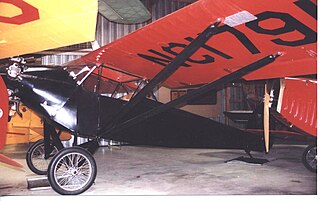
The Mono Aircraft Monoprep was an American light civil sporting monoplane of the late 1920s.

The Waco 9 is an American-built three-seat biplane design that first flew in 1925.
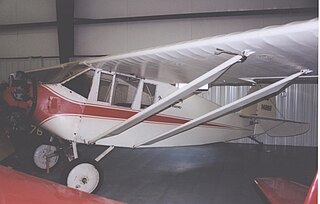
The Star Cavalier was an American two-seat high-wing light aircraft first introduced in the late 1920s.
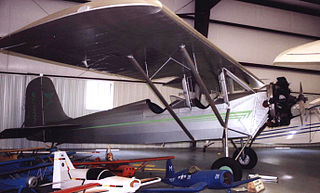
The Timm Collegiate was a series of American-built two-seat light aircraft of the late 1920s.

The Stout Skycar was a series of four one-off American light aircraft of the 1930s.

The Swallow Airplane Swallow is an American-built general purpose biplane of the mid to late 1920s.

The Sikorsky R-6 is an American light two-seat helicopter of the 1940s. In Royal Air Force and Royal Navy service, it was named the Hoverfly II.

The Custer Channel Wing was a series of American-built experimental aircraft designs of the 1940s and 1950s incorporating a half-barrel shaped section to each wing.
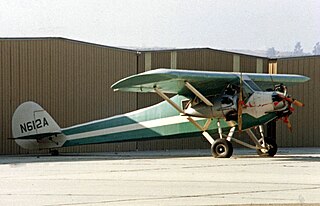
The Kreutzer Air Coach is an American-built light trimotor transport aircraft of the late 1920s.

The Driggers D1-A is an American-built light high-wing single-seat sporting monoplane of the late 1920s.
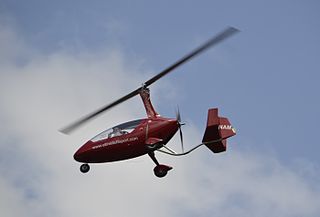
The AutoGyro Calidus is a German autogyro, designed and produced by AutoGyro GmbH of Hildesheim. The aircraft is supplied as a complete ready-to-fly-aircraft.

The Jameson RJJ-1 Gipsy Hawk was a single-engine light aircraft intended to be homebuilt from plans. The prototype was designed and constructed in the U.S. by Richard Jameson in the late 1960s-early 1970s.
The Transcendental Model 1-G was an experimental American tiltrotor prototype of the 1950s. It was a single-seat aircraft powered by a single piston engine, and was the first tiltrotor to fly. A single example was built, which was destroyed in a crash in 1955.
The Miller JM-2 was an American Formula One Air Racing homebuilt aircraft that was designed by Jim W Miller and produced by JW Miller Aviation of Marble Falls, Texas. When it was available the aircraft was supplied in the form of plans for amateur construction.

The Williams W-17 Stinger is an American homebuilt racing aircraft that was designed for Formula One Air Racing by Art Williams and produced by his company, Williams Aircraft Design of Northridge, California, introduced in 1971. The aircraft was at one time available in the form of plans for amateur construction, but only one was ever constructed.

The G.A.C. 102 Aristocrat or General 102 Aristocrat is a single-engined cabin monoplane built in the US just before the Great Depression. It proved popular, with over forty built; an early example was taken on an aerial survey of Antarctica. One survives.

















